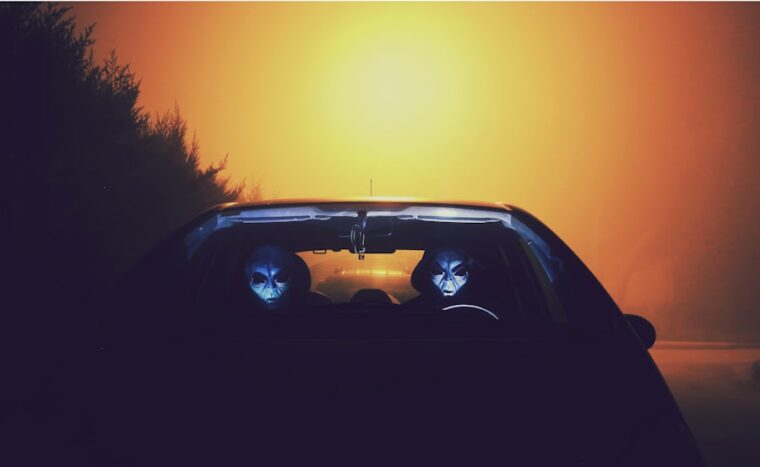The Kinross Incident is one of the most perplexing and enigmatic events in the history of UFO sightings. It took place on November 23, 1953, when an unidentified flying object was detected on radar at Kinross Air Force Base in Michigan. The incident involved an F-89C Scorpion interceptor aircraft, piloted by 1st Lt. Felix Moncla, and his radar operator, 2nd Lt. Robert Wilson. The aircraft was scrambled to intercept the UFO, but during the pursuit, it mysteriously vanished from radar and was never seen again. The Kinross Incident has since become a subject of intense speculation and debate among UFO enthusiasts, military historians, and conspiracy theorists.
Background on the Military’s Involvement in UFO Sightings
The Kinross Incident occurred during a time when the United States military was deeply involved in investigating and responding to reports of unidentified flying objects. In the years following World War II, there was a surge in UFO sightings across the country, leading to growing concerns about potential threats from extraterrestrial visitors or advanced foreign aircraft. The U.S. Air Force established Project Blue Book in 1952, a program dedicated to studying and analyzing UFO reports. The military took these sightings seriously, as they posed potential national security risks and raised questions about the limits of human technology. The Kinross Incident was just one of many cases in which military personnel were tasked with investigating and responding to UFO sightings, highlighting the significant role that the military played in the study of unidentified aerial phenomena during this period.
The Mysterious Disappearance of Felix Moncla and Robert Wilson
The disappearance of Felix Moncla and Robert Wilson remains one of the most baffling aspects of the Kinross Incident. After their aircraft vanished from radar, an extensive search and rescue operation was launched, but no trace of the F-89C Scorpion or its crew was ever found. Despite the efforts of the U.S. Air Force and Canadian authorities, the fate of Moncla and Wilson remains unknown to this day. Their disappearance has fueled numerous theories and speculations about what may have happened to them, ranging from encounters with extraterrestrial beings to covert military operations gone awry. The lack of concrete evidence or closure has only added to the mystery surrounding the Kinross Incident.
Theories and Speculations Surrounding the Kinross Incident
The Kinross Incident has sparked a wide range of theories and speculations about the nature of the UFO that was encountered by Moncla and Wilson. Some believe that the UFO was an advanced aircraft from a foreign power, such as the Soviet Union, conducting reconnaissance over North American airspace. Others have suggested that the object may have been of extraterrestrial origin, leading to theories about alien abductions or interstellar encounters. There are also those who speculate that the disappearance of the F-89C Scorpion was the result of a tragic accident or malfunction, rather than any external or paranormal influence. The lack of definitive evidence has allowed for these theories to persist over the years, contributing to the enduring intrigue and controversy surrounding the Kinross Incident.
Declassified Documents and New Evidence
In recent years, declassified documents and new evidence have shed light on the Kinross Incident, offering fresh insights into what may have transpired on that fateful day in 1953. These documents reveal that the U.S. Air Force conducted a thorough investigation into the disappearance of Moncla and Wilson, exploring various possible explanations for the incident. While much of this information remains classified or heavily redacted, it has provided researchers with valuable clues and leads for further inquiry. Additionally, advances in technology and forensic techniques have allowed for the reexamination of physical evidence related to the Kinross Incident, offering hope for potential breakthroughs in solving this enduring mystery.
The Legacy of the Kinross Incident
The legacy of the Kinross Incident extends far beyond its immediate impact on military operations and UFO research. It has become a cultural touchstone for those interested in unexplained phenomena and government secrecy, inspiring countless books, documentaries, and films that explore its implications. The case has also influenced public perceptions of UFOs and government transparency, fueling skepticism about official explanations for such events. The enduring fascination with the Kinross Incident serves as a reminder of humanity’s enduring curiosity about the unknown and our desire to uncover the truth behind extraordinary events.
What We Can Learn from the Kinross Incident
The Kinross Incident continues to captivate our imagination and challenge our understanding of what is possible in our world. It serves as a reminder that there are still many mysteries waiting to be unraveled, and that our quest for knowledge is an ongoing journey. The case also highlights the importance of transparency and accountability in government operations, as well as the need for rigorous investigation and analysis when confronted with unexplained phenomena. Ultimately, the Kinross Incident reminds us that there is much we have yet to discover about our universe and ourselves, and that we must remain open-minded and vigilant in our pursuit of truth and understanding.
-

UAP UFO Search The Reed Family Abduction 1969 Pod Cast
-

UAP UFO Search The Puerto Rico UFO Chase 1980s Pod Cast
-

UAP UFO Search The Portuguese Navy UFO Incident 1960s Pod Cast
-

UAP UFO Search The Oxfordshire UFO Sighting 1967 Pod Cast
-

UAP UFO Search The UFOs of World War II Foo Fighters Pod Cast
-

UAP UFO Search The Sonoran Desert UFO Crash 1980s Pod Cast
-

UAP UFO Search The East German UFO Incident 1952 Pod Cast
-

UAP UFO Search The Montauk Project – Conspiracy theories Pod Cast
-

UAP UFO Search The Lake Erie UFO Flap 2000s Pod Cast
-

UAP UFO Search The Manhattan UFO Sightings 1989 1992 Pod Cast
-

UAP UFO Search The Berwyn Mountain Incident 1974 Pod Cast
-

UAP UFO Search The Trans en Provence UFO 1981 Pod Cast

